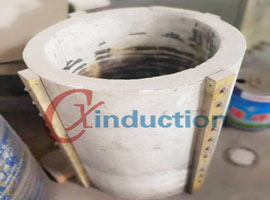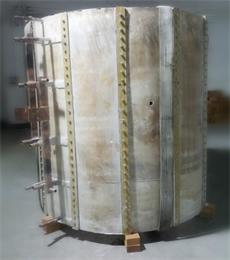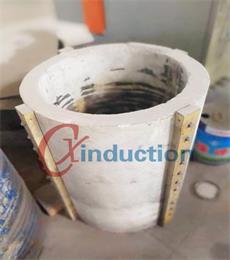INDUCTION COIL

CX-INDUCTION manufactures a full range of coil sizes and types for induction melting and heating applications. All new coils are custom designed and engineered for the customer's specific production needs and application. High conductivity copper tubing with proper wall thickness is selected to maximize electrical efficiency.
induction coils are designed with the mechanical strength to withstand the severe conditions of a foundry environment. High dielectrical and high temperature insulating materials are used for all coils with special attention to the operating environment such as vacuum or air melt applications plus what power, voltage and frequency is being applied.
We have an excellent engineering team that can custom design your coil configuration to satisfy any unique high temperature application.
CX-INDUCTION heating coils can be designed specifically for high temperature graphite heating. These coils can be engineered and specially wound so that a tri-zone heating process occurs. The top and bottom sections will heat at a lower temperature than will the middle section.
We design each coil to maximize the efficiency of the your melting or heating process.
We repair and rebuild customer existing coils.
Since high amounts of electricity can generate a tremendous amount of heat, the entire system is water-cooled. The water travels through the induction system via the same route as the electricity. The water is recirculated throughout the induction system by a water pumping system and is cooled by a water cooling tower. The use of induction technology for heating and/or melting metal alloys is faster and more precise in temperature than traditional furnaces, which involve heating the metal through an external means like fire, and has more widespread uses in metallurgy.
remanufacturing/rebuilding induction coils
Cx-induction market niche in the induction equipment manufacturing industry is its product offering of remanufactured/rebuilt equipment. We offer customers the option of either rebuilding their existing induction equipment to "like new" status or purchasing all remanufactured/rebuilt equipment as opposed to buying brand new equipment.
Before the remanufacturing/rebuilding process begins, our sales and engineering departments review customer requirements for rebuilding their induction equipment or the equipment that is selected from a huge inventory of used equipment.
The rebuilding process includes completely stripping the equipment down to individual part and component level. New components and parts replace all old, damaged and obsolete parts. Exteriors are sandblasted, refabricated and then repainted. Equipment is then reassembled and sent to the testing department for thorough and complete testing for structural integrity and full functionality. The end result is equipment that looks and functions like new equipment.




